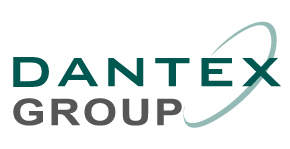Most flexible packaging printers choose to purchase trade shop plates, mainly due to the high costs associated with solvent processing: the equipment, specialised air-conditioning and extraction, and solvent recovery. While there have indeed been alternative technologies available, quality has been a significant issue, until now. Dantex’s Aquaflex plate range is achieving a print quality in flexible packaging that is successfully challenging all other current options.
UK flexographic trade shop Waldo recently became the first of its kind to install an Aquaflex plate making system. Waldo is no stranger to UK firsts; they were the first to install Esko HD in the UK and obtain Esko HD certification and the first to install an Epson WT7900 with Star proof. As part of Waldo director Phil Walmsley’s environmental initiative they are harvesting the rain from their roof to process Aquaflex Optima plates.
When one particular Waldo customer noticed that a set of solvent plates were damaged, needing immediate replacement, and new solvent plates would not be ready in time, Waldo proceeded to produce the job in Aquaflex DOPM 114. The DOPM plates were completed and despatched in little over 1 hour. They arrived at the customer site, some 152km away, and were being mounted on press while the final solvent plate would have only just been coming out of the finisher.
Colour strength can be an issue preventing flexography winning more business from gravure. However, Aquaflex achieves comparable densities even without modifications and additional steps during plate production. Traditionally produced solvent wash plates can leave images looking weak and insipid and can suffer from heavy dot gain on highlights. Even new technologies can show a 1% minimum dot printing between 7%-11% and can suffer from dirtying in the mid-tones during printing.
Aquaflex Optima gives better colour strength and ink lay-down leading to greater vibrancy and its 1% minimum dot has printed as low as 3% to 5% in flexibles so far. Optima has superior ink release characteristics and requires very little cleaning during printing and removal. Solvent plates want to lift from the mounting tape, hence printers edge-seal and use primers; also because of poor elasticity the plates can have fit issues. Optima stays on the tape with no edge lifting and both fit and register appear greatly improved.
Polyprint Mailing Films in Norwich is the UK’s leading supplier of polythene mailing films, envelopes and bags as well as flexible packaging for the food industry and other sectors. The company purchases plates from a number of UK trade houses, including Waldo. When Waldo installed a Dantex AQF 900 System Polyprint agreed to help pioneer this new technology and carried out a fingerprint using DOPM 114. Plates were printed using solvent-based inks on Polyprint’s second eight-colour Onyx Central Impression (CI) Flexopress (Uteco). Since the fingerprint, Polyprint has run numerous jobs on a daily basis using DOPM 114. Print manager Neil Squance made the following comments and observations:
“We have started using the DOPM 114 plates, supplied by Waldo, and have been very pleased with the results so far. They are very easy to handle and seem to adhere to the sleeve very well; we have occasionally had a problem with marking up but with the Dantex plates we don’t seem to experience this issue. We have tried one job without taping down the edges and so far so good; also the plates de-mount very well. Printing with the plates has been successful in the way they transfer the ink and colours are a lot stronger. When we moved to higher screen aniloxes we had concerns, but we have had no problems and hit our density targets with this plate. They also seem to stay cleaner, which has helped, as we now don’t have to stop and wipe them over during the run. The results we have had on the jobs so far have been very encouraging and we now use them as often as possible. So far I can honestly say that we love them!”
Since trialling Aquaflex, a number of UK flexible printers are now successfully printing production jobs day in day out with outstanding results using conventional and HD imaged Aquaflex plates. More importantly, common print issues normally associated with printing fine screens are overcome. Consider the immediate and long-term impact on the environment the elimination of solvents and the introduction of high-speed processing will have: a high quality, cleaner and greener solution for the flexographic printing industry.

